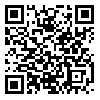Volume 8, Issue 2 (Summer 2025)
Iranian Journal of Educational Sociology 2025, 8(2): 0-0 |
Back to browse issues page
Download citation:
BibTeX | RIS | EndNote | Medlars | ProCite | Reference Manager | RefWorks
Send citation to:



BibTeX | RIS | EndNote | Medlars | ProCite | Reference Manager | RefWorks
Send citation to:
Arabbaygi M A, Mahoor H, Fallah Mahneh T. (2025). Effectiveness of the Concept Mapping Teaching Method on the Creativity Components of Second Grade Elementary Students in Mashhad. Iranian Journal of Educational Sociology. 8(2),
URL: http://iase-idje.ir/article-1-1550-en.html
URL: http://iase-idje.ir/article-1-1550-en.html
1- PhD Student, Department of Educational Psychology, Bojnourd Branch, Islamic Azad University, Bojnourd, Iran.
2- Assistant Professor, Department of Psychology, Bayhaq Institute of Higher Education, Sabzevar, Iran.
3- Assistant Professor, Department of Educational Sciences, Torbat Heydariyeh Branch, Islamic Azad University, Torbat Heydariyeh, Iran.
2- Assistant Professor, Department of Psychology, Bayhaq Institute of Higher Education, Sabzevar, Iran.
3- Assistant Professor, Department of Educational Sciences, Torbat Heydariyeh Branch, Islamic Azad University, Torbat Heydariyeh, Iran.
Abstract: (16 Views)
This study aims to evaluate the effectiveness of the Concept Mapping teaching method in enhancing the creativity components—fluency, flexibility, originality, and elaboration—of second-grade elementary students in Mashhad, Iran.
Methods and Materials: A semi-experimental design with a pre-test and post-test structure was used. The sample consisted of 40 second-grade elementary students from Mashhad, divided into an experimental group (n = 20) and a control group (n = 20). The experimental group received instruction using the Concept Mapping method, while the control group followed traditional teaching methods. Creativity was assessed using a creativity test based on Torrance’s theory (1979). Descriptive statistics and covariance analysis (ANCOVA) using SPSS23 were employed for data analysis.
Findings: The results showed that the experimental group exhibited significant improvements in all creativity components—fluency, flexibility, originality, and elaboration—compared to the control group. The ANCOVA results indicated that the Concept Mapping method significantly affected creativity, with p-values less than 0.01 across all components. The experimental group demonstrated higher scores in the post-test on creativity measures, reflecting enhanced cognitive flexibility, fluency, originality, and elaboration.
Conclusion: The findings suggest that the Concept Mapping teaching method is an effective tool for enhancing creativity in elementary school students. By visually organizing and connecting ideas, students are able to improve their creative thinking across various dimensions, including fluency, flexibility, originality, and elaboration. This study provides evidence supporting the integration of Concept Mapping into elementary education as a strategy to foster creativity.
Methods and Materials: A semi-experimental design with a pre-test and post-test structure was used. The sample consisted of 40 second-grade elementary students from Mashhad, divided into an experimental group (n = 20) and a control group (n = 20). The experimental group received instruction using the Concept Mapping method, while the control group followed traditional teaching methods. Creativity was assessed using a creativity test based on Torrance’s theory (1979). Descriptive statistics and covariance analysis (ANCOVA) using SPSS23 were employed for data analysis.
Findings: The results showed that the experimental group exhibited significant improvements in all creativity components—fluency, flexibility, originality, and elaboration—compared to the control group. The ANCOVA results indicated that the Concept Mapping method significantly affected creativity, with p-values less than 0.01 across all components. The experimental group demonstrated higher scores in the post-test on creativity measures, reflecting enhanced cognitive flexibility, fluency, originality, and elaboration.
Conclusion: The findings suggest that the Concept Mapping teaching method is an effective tool for enhancing creativity in elementary school students. By visually organizing and connecting ideas, students are able to improve their creative thinking across various dimensions, including fluency, flexibility, originality, and elaboration. This study provides evidence supporting the integration of Concept Mapping into elementary education as a strategy to foster creativity.
Keywords: Concept Mapping, Creativity, Fluency, Flexibility, Originality, Elaboration, Elementary Education, Teaching Methods, Cognitive Development
Type of Study: Research Article |
Subject:
Special
Received: 2025/03/15 | Accepted: 2025/07/1 | Published: 2025/07/1
Received: 2025/03/15 | Accepted: 2025/07/1 | Published: 2025/07/1
Send email to the article author
| Rights and permissions | |
 |
This work is licensed under a Creative Commons Attribution-NonCommercial 4.0 International License. |



